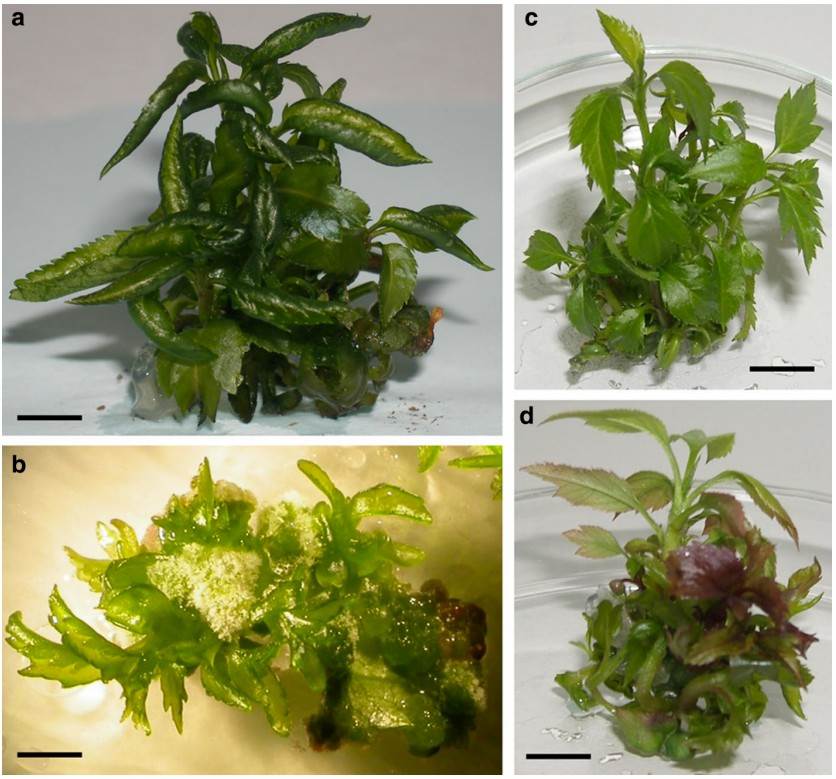Apple Endosperm Culture Technology
Apple is the main tree species cultivated in deciduous fruit trees, and it is also one of the tree species with the widest cultivated area and high yield in the world. Endosperm of angiosperm is one of the products of double fertilization, and triploid endosperm cells can form triploid plants through organogenesis. Using endosperm to cultivate seedless fruit is a good breeding way for horticultural plants and has important application value.
Principle
Endosperm culture refers to the technique of separating the endosperm tissue from the parent and developing it into a complete plant through in vitro culture. The endosperm is the place where nutrients are stored. Under natural conditions, endosperm cells store a large amount of nutrients in the form of starch, protein and lipids for the needs of embryonic development and seed germination. Therefore, endosperm culture also provides a good experimental system for studying the biosynthesis of these products and their metabolism.
The endosperm tissue of angiosperm or the callus formed by it has potential organ differentiation ability. As long as certain suitable conditions are given, the callus formed by endosperm can form organs such as buds and roots after induction, and form a complete plant, which proves the totipotency of endosperm cells. This also found a new way to induce the formation of triploid plants.
 Figure 1. Incidence of hyperhydricity in vitro and effect of gelling agent on shoot regeneration. (Teixeira da Silva, J.A.; et al. 2019)
Figure 1. Incidence of hyperhydricity in vitro and effect of gelling agent on shoot regeneration. (Teixeira da Silva, J.A.; et al. 2019)
Procedures
- Sampling and Sterilization of Endosperm Culture
A key aspect of endosperm culture is to select the appropriate developmental period for success. In the late stage of seed development, the frequency of callus produced by the disappearing endosperm was extremely low. The appropriate period of endosperm culture in different plants must be determined through experimental observation.
Apple endosperm culture should be carried out when the endosperm has become cell tissue and fully grown. At this stage, the differentiation of various organs of the immature embryo has been completed but the growth is slow. About 25 d after apple flowering and pollination, the young fruits were collected and sterilized with 70% alcohol, rinsed with distilled water for 1-2 times, sterilized with 2% sodium hypochlorite for 20-30 min, and washed with sterile water for 3-4 times. When inoculating, cut the young fruit under aseptic conditions, take out the seeds under the dissecting microscope, cut off the embryo with tweezers and dissecting needles on the ultra-clean table to leave the endosperm, and inoculate the endosperm on the medium for inducing callus.
- Induction of Endosperm Callus
The basic medium commonly used is MS, White, MT, etc., but MS medium is the most commonly used. In order to promote the production and proliferation of callus, some organic substances are added to the medium, including yeast extract or hydrolyzed casein, etc., and many researchers also use natural extracts, such as coconut juice and starch. In endosperm culture, most angiosperms first induce callus formation in endosperm cells, and then differentiate organs to induce bud clusters or embryoid. In general, young endosperm cultures are more likely to produce callus than mature endosperm cultures.
In this experiment, MS + 1 mg/L 6-BA + 0.5 mg/L 2,4-D was used as the callus induction medium. The medium was supplemented with 200-500 mg/L hydrolyzed casein (casein hydrolysate, CH), 5% sucrose, 0.7% agar, pH 6.0, and sterilized under 1.2 kg/cm2 pressure for 15 min. The culture temperature was maintained at 25-27°C, with scattered light conditions.
- Differentiation Culture
The callus used for differentiation is usually a newly propagated callus during subculture. The general structure is relatively dense, mostly light green or beige. The callus with good growth and 22-25 d growth was selected for differentiation culture. Sufficient light should be provided during the period of inducing callus differentiation. Under the fluorescent light of about 30 µmol/(m2·s), the light culture was carried out for 10-12 hours per day. The differentiation medium was MS + (0.1~1) mg/L BA + 500 mg/L CH + 3% sucrose.
After 20 d of differentiation culture, green buds were produced. After 40-60 d, they continued to grow into plants with small leaves. After 45 d, the small buds grew upright clusters of leaflets.
- Rooting
For the rooting of apple test-tube seedlings, the apple seedlings with a length of 3-5 cm about 35 d after subculture were transferred to the rooting medium (1/2 MS + 0.5 mg/L NAA) for rooting culture. The root primordium appeared at the base of the cuttings in about 10 d, and the roots could grow to a length that could be transplanted in 20-30 d.
- Transplanting
Obtaining robust test-tube seedlings is the key to transplanting and surviving. Appropriately increasing the concentration of sucrose in the rooting medium can make the stems and leaves grow robustly and improve the survival rate of transplanting. Remove the cap or tampon of the culture bottle, harden the seedlings in the culture room for 4-5 d to adapt the leaves to the low humidity environment, and transplant them before bacteria appear on the surface of the culture medium. In order to maintain a high relative humidity, a small shed with plastic film should be covered after planting. After 1 week, gradually remove the film until the plastic film is completely removed.
Reference
- Teixeira da Silva, J.A.; et al. In vitro tissue culture of apple and other Malus species: recent advances and applications. Planta. 2019, 249: 975–1006.
For research or industrial raw materials, not for personal medical use!
 Figure 1. Incidence of hyperhydricity in vitro and effect of gelling agent on shoot regeneration. (Teixeira da Silva, J.A.; et al. 2019)
Figure 1. Incidence of hyperhydricity in vitro and effect of gelling agent on shoot regeneration. (Teixeira da Silva, J.A.; et al. 2019)